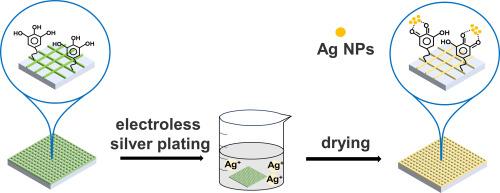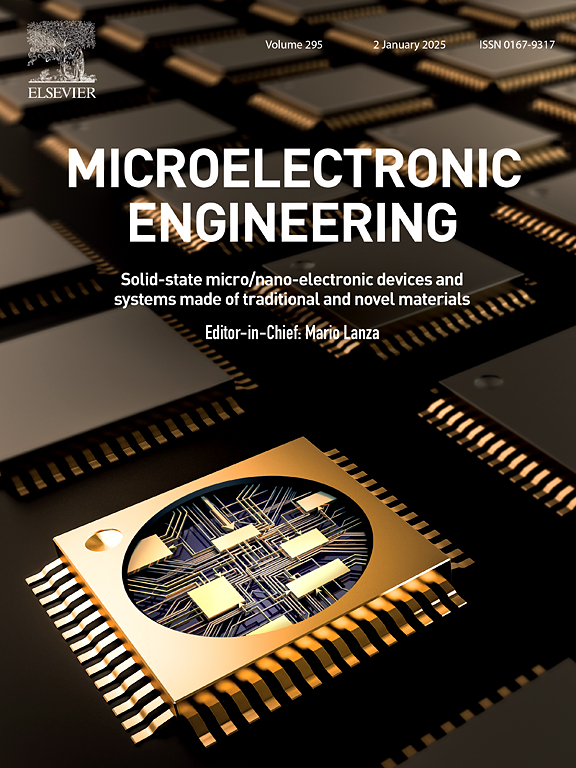Controlled in-situ reduction strategy for synthesis of transparent conductive metal meshes using tannic acid-based photoresists
Abstract
Transparent conductive films (TCFs) that converge high transmittance and high conductive properties are essential for many optoelectronic devices, and efforts have been made to acquire films with high transmittance as well as low resistance of the thin layer by low-cost means. Here, we introduce a novel and simple strategy for the controlled in-situ templated synthesis of a transparent conductive metal mesh by utilizing the good reducibility to silver ions of the patterned tannic acid (TA)-based photoresists. To achieve this, mesh patterns with tunable line width were first printed using the TA-based negative photoresists by laser direct writing equipment. Within the patterned domains, the phenolic hydroxyl groups could interact with metal ions and act as reducing agents, thus accelerating the in-situ growth of silver nanoparticles to fabricate silver grids. By changing the line width of the designed patterns and the PH of the plating solution, the metal grids with a high transmission (T) of 91.5% and a thin-layer resistance (Rs) as low as 4.15 Ω sq.−1 are ultimately achieved after annealing treatment. Our description demonstrates a simple and effective approach that is potentially scalable to other materials as well.


 求助内容:
求助内容: 应助结果提醒方式:
应助结果提醒方式:


